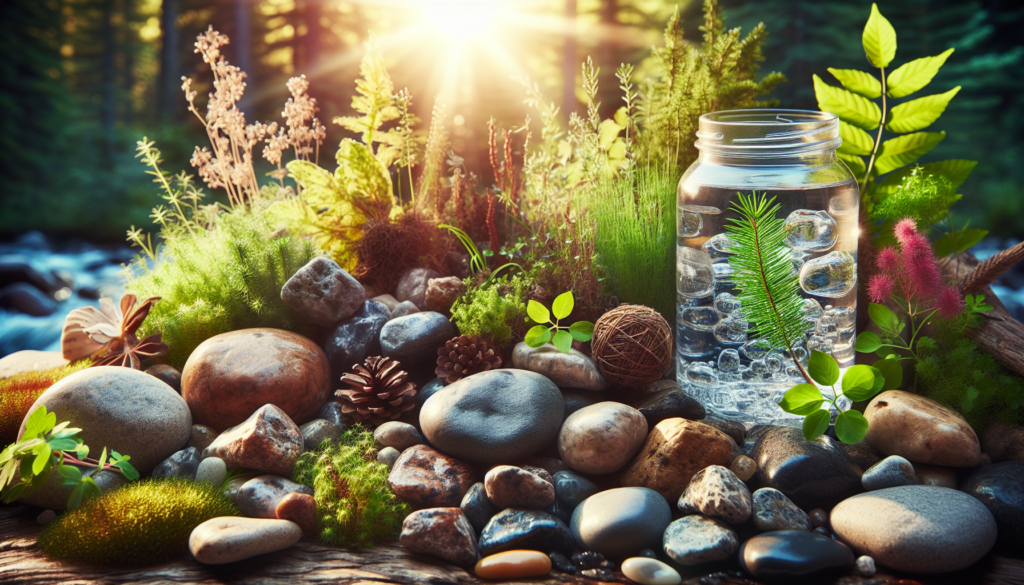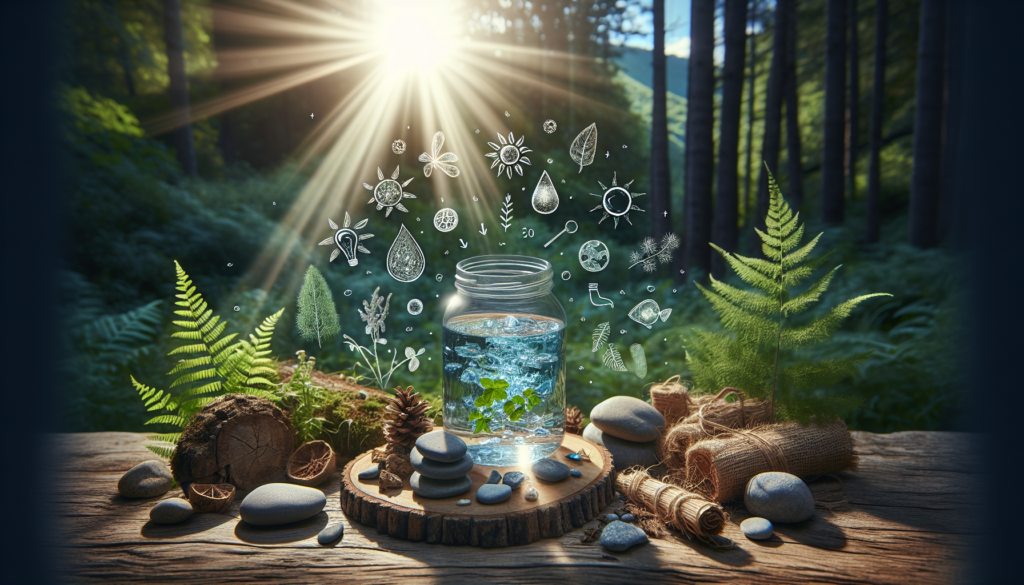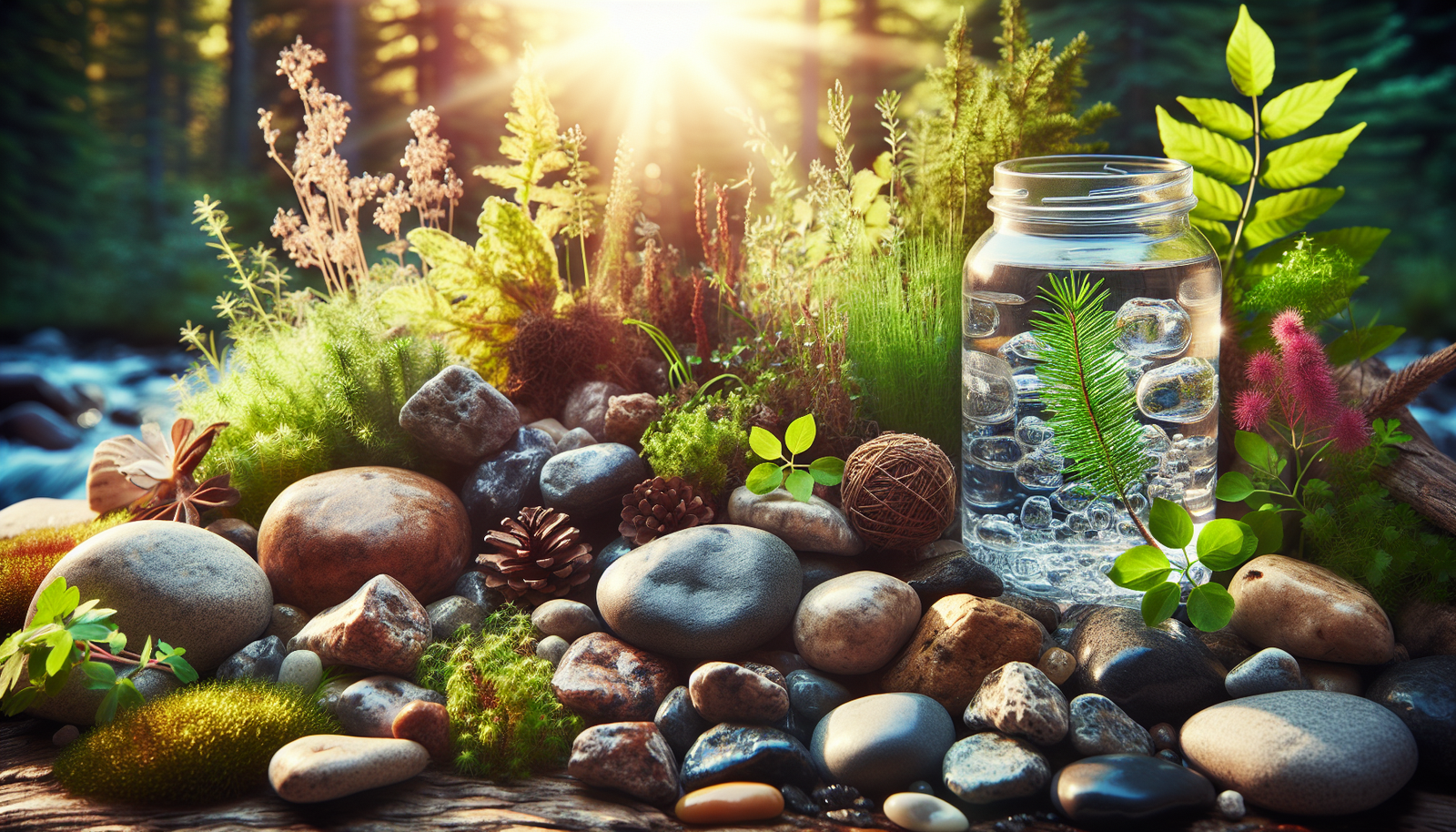Imagine you find yourself in the middle of the wilderness, surrounded by nature’s beauty but faced with the challenge of limited water supply. How would you ensure your survival? In the article “Purifying Water in the Wilderness: Using Natural Resources,” we explore the art of purifying water in the wild using natural resources available at your fingertips. With the potential to save lives and offer peace of mind, mastering this basic survival skill is essential for adventurers and those preparing for unexpected situations. By discovering innovative ways to purify water using nature’s gifts, you can navigate the wilderness with confidence and emerge stronger in the face of adversity.
Purifying Water in the Wilderness: Using Natural Resources

Introduction to Water Purification in the Wilderness
When venturing into the wilderness, one of the most critical aspects of survival is ensuring a clean and safe water supply. In an environment where clean water sources may be scarce and contaminated, it becomes essential to have the knowledge and tools to purify water and make it safe for consumption. By utilizing natural resources and following proper techniques, you can ensure that your water is free from harmful bacteria, viruses, and parasites, allowing you to quench your thirst without putting your health at risk.
Understanding the Importance of Clean Water
Clean water is vital for maintaining good health, and in a wilderness scenario, it becomes even more critical. Drinking contaminated water can lead to severe illnesses, such as diarrhea, cholera, and typhoid fever, which can quickly debilitate you and make survival challenging. Additionally, dehydration is a constant risk in the wilderness, and without access to clean water, it becomes impossible to stay properly hydrated. Understanding the significance of clean water and its role in sustaining life will motivate you to prioritize water purification methods during your outdoor adventures.
Identifying Potential Sources of Water
In the wilderness, finding sources of water may be a challenge, but with careful observation and knowledge of the environment, you can identify potential sources. Look for natural water bodies such as rivers, lakes, and streams, which are often reliable sources of water. However, keep in mind that even seemingly pristine water sources can contain harmful microorganisms. Other potential sources include underground springs, which can be accessed by digging, and water collected in natural depressions, such as rock crevices or tree hollows. It’s important to remember that stagnant water, standing pools, or water near potential sources of contamination, such as animal carcasses or waste, should be avoided.
Assessing Water Quality
Once you’ve identified a potential water source, it’s crucial to assess its quality before consuming it. Even clear water can contain invisible contaminants that pose a threat to your health. Physical indicators, such as color, odor, and turbidity, can give you an initial idea of the water’s quality. If the water appears murky, has an offensive smell, or unusual coloration, it’s best to avoid it. However, since many harmful contaminants are invisible to the naked eye, it’s essential to perform further assessments. Various portable water testing kits are available on the market, allowing you to check for bacteria, viruses, and the presence of harmful chemicals. These tests are simple to use and provide accurate results within minutes, enabling you to make informed decisions about purifying the water.
Methods of Purifying Water Using Natural Resources
In a wilderness scenario, where modern filtration systems may be unavailable, it’s necessary to explore alternative methods of water purification utilizing natural resources. Here are some effective techniques that require minimal equipment and rely on natural elements to make water safe for consumption.
Solar Water Disinfection
One of the simplest and most accessible methods of water purification is solar water disinfection, also known as SODIS. This technique utilizes the power of the sun to kill harmful bacteria, viruses, and parasites present in water. To perform SODIS, fill transparent plastic bottles or containers with water and place them in direct sunlight for at least six hours. The sun’s ultraviolet (UV) rays will penetrate the water, destroying pathogens and rendering it safe to drink. This method is best suited for clear water sources and areas with abundant sunlight.

Boiling Water
Boiling water is perhaps the oldest and most reliable method of purifying water. By bringing water to a rolling boil for at least one minute, you can kill most disease-causing microorganisms, including bacteria, viruses, and parasites. This method is effective regardless of the water’s clarity and works well in areas where heating resources, such as firewood or portable stoves, are available. However, boiling water may not eliminate certain chemicals or toxins, so it’s crucial to combine this method with other purification techniques if possible.
Using Charcoal as a Filtering Agent
Charcoal has natural filtering properties and can effectively remove impurities from water. To create a charcoal filter, start by crushing or grinding charcoal into small particles. Place the charcoal in a container, such as a cloth pouch or a hollowed-out piece of bamboo, and pass the water through it. The charcoal will act as a natural filter, trapping debris, sediment, and some microorganisms, resulting in cleaner water. While this method may not eliminate all contaminants, it provides an additional layer of purification to improve water quality.
Creating a Solar Still
A solar still is a simple yet efficient way to obtain clean water from various water sources, including stagnant water or even urine. To create a solar still, dig a hole in the ground and place a container in the center. Surround the container with vegetation or urine-soaked materials, and cover the hole tightly with a plastic sheet or a large piece of fabric. Secure the edges of the cover to prevent any gaps. As the sun’s heat causes the water to evaporate, the plastic sheet collects the vapor, which then condenses and drips into the container, providing you with purified water. This method requires sunny weather and can be time-consuming, but it is a viable option when other purification methods are not available.
Making a DIY Biofilter
A biofilter utilizes natural materials to remove impurities from water, making it safe to drink. To create a DIY biofilter, start by layering different materials in a large container. Begin with a coarse layer of gravel or small stones at the bottom, followed by a layer of activated charcoal. On top of the charcoal, add a layer of sand, and finally, a layer of fine cloth or mesh. Pour the untreated water into the biofilter, and as it passes through the layers, the materials will trap harmful bacteria and sediment, resulting in purified water. This method effectively removes visible impurities but may not eliminate all pathogens, so it’s essential to combine it with other purification methods, if possible.
Using Natural Coagulants
Certain natural substances possess coagulant properties, which help remove impurities from water. Two common examples are seeds from the Moringa oleifera tree and alum. Crush Moringa seeds into a powdered form or dissolve alum in water, and then add these substances to the untreated water. Stir the mixture thoroughly and allow it to settle. As the coagulant binds to impurities, they will sink to the bottom, creating a sediment layer. Carefully pour the clear water above the sediment into a separate container, leaving the impurities behind. This method is effective in removing visible particles, but it should be combined with other purification methods for complete sterilization.
Collecting Dew or Rainwater
When water sources are scarce or contaminated, collecting dew or rainwater is a viable option. Set up a collection system using large leaves, plastic sheets, or any other waterproof material. Angle the collecting surface towards a container placed below, allowing gravity to guide the water into the container. This method is particularly useful in areas with regular rainfall or high humidity, where dew collection can provide a valuable water source. It’s crucial to ensure that the collecting surface and container are clean to prevent contamination.
Using UV Radiation
The sun’s UV radiation can also be harnessed to purify water. While this method requires clear skies and non-turbid water, it can provide an effective means of water purification. Fill transparent plastic bottles or containers with water and place them in direct sunlight for several hours, ideally a full day. The UV rays will penetrate the water, destroying harmful pathogens and making it safe to drink. This method can be combined with other purification techniques to ensure comprehensive water sterilization.
Developing Good Hygiene Practices
In addition to purifying water, maintaining good hygiene practices is vital in the wilderness to prevent waterborne illnesses. Wash hands thoroughly with soap and clean water before handling any purification equipment or consuming water. If soap is not available, use hand sanitizers with at least 60% alcohol. Avoid contaminating the water supply by keeping containers clean and uncontaminated. It’s also advisable to use separate containers for drinking water and daily activities, such as cooking or cleaning. By practicing good hygiene, you can further reduce the risk of infections and ensure your water remains safe throughout your wilderness experience.
Conclusion
When exploring the wilderness, having the knowledge and skills to purify water using natural resources is essential for survival. By understanding the importance of clean water, identifying potential water sources, and utilizing various methods of purification, you can ensure a constant supply of safe drinking water. Whether it’s through solar water disinfection, boiling, filtration with charcoal, or harnessing other natural elements, these techniques enable you to stay hydrated and healthy during your wilderness adventures. Remember to assess water quality, combine multiple methods for comprehensive purification, and practice good hygiene to minimize the risk of waterborne illnesses. With these essential tools and techniques, you can confidently explore the great outdoors while maintaining your well-being.

